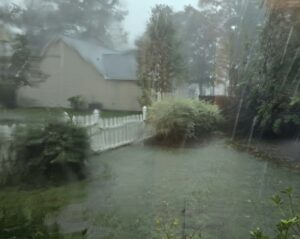Your Landscape After a Flood….
go.ncsu.edu/readext?1028994
en Español / em Português
El inglés es el idioma de control de esta página. En la medida en que haya algún conflicto entre la traducción al inglés y la traducción, el inglés prevalece.
Al hacer clic en el enlace de traducción se activa un servicio de traducción gratuito para convertir la página al español. Al igual que con cualquier traducción por Internet, la conversión no es sensible al contexto y puede que no traduzca el texto en su significado original. NC State Extension no garantiza la exactitud del texto traducido. Por favor, tenga en cuenta que algunas aplicaciones y/o servicios pueden no funcionar como se espera cuando se traducen.
Português
Inglês é o idioma de controle desta página. Na medida que haja algum conflito entre o texto original em Inglês e a tradução, o Inglês prevalece.
Ao clicar no link de tradução, um serviço gratuito de tradução será ativado para converter a página para o Português. Como em qualquer tradução pela internet, a conversão não é sensivel ao contexto e pode não ocorrer a tradução para o significado orginal. O serviço de Extensão da Carolina do Norte (NC State Extension) não garante a exatidão do texto traduzido. Por favor, observe que algumas funções ou serviços podem não funcionar como esperado após a tradução.
English
English is the controlling language of this page. To the extent there is any conflict between the English text and the translation, English controls.
Clicking on the translation link activates a free translation service to convert the page to Spanish. As with any Internet translation, the conversion is not context-sensitive and may not translate the text to its original meaning. NC State Extension does not guarantee the accuracy of the translated text. Please note that some applications and/or services may not function as expected when translated.
Collapse ▲ After a flood, your landscape and turfgrass will probably not be your first priority. But once the water recedes and things return to status quo, you may begin to notice some changes to your home’s outdoor environment. Soil washout, organic matter (mulch) movement, and plant damage often occur as a result of heavy rain and flooding events. Common symptoms of flood damage on plants include:
After a flood, your landscape and turfgrass will probably not be your first priority. But once the water recedes and things return to status quo, you may begin to notice some changes to your home’s outdoor environment. Soil washout, organic matter (mulch) movement, and plant damage often occur as a result of heavy rain and flooding events. Common symptoms of flood damage on plants include:
- Yellowing/browning of leaves*
- Leaf curl
- Loss of turgidity/wilting*
- Premature leaf drop*
- Branch dieback
- Stunted new growth (leaves and stems)
- Windthrow (uprooted by wind)
- Gradual plant decline
- Plant death
*Commonly seen in Brunswick County during the 2024 Hurricane Season.
While flooding can cause permanent damage to your landscape, there are things you should do after the storm to minimize its effects. Doing the following things will help you navigate your landscape after a storm, safely handling any damage resulting from a flood.
First and foremost, you need to assess your damage. The most important thing post-flood is ensuring your safety. Do not attempt to assess any damage until it is safe to do so. Taking pictures of things will be the easiest way to document any damage. You will need to take photos of how high water levels were, any damage to plants and property, and any foreign items that may have washed onto your property. Patience will be a virtue during this time so you do not make any hasty decisions regarding your plants. Sometimes, the damage you see immediately after the storm is only temporary.
After documenting any damage, you can begin the cleanup process. It is important to wait until everything is dry before you start cleaning up because walking and driving on wet soil can cause compaction. Any uprooted plants will need to be removed, especially any trees. Trees and large branches can be dangerous, so it is recommended to hire a certified tree care professional. You can find certified tree care professionals at the following website: TreesAreGood.org. A certified tree care professional can also help you remove any diseased, broken, or dead branches from your trees.
Saltwater intrusions can happen during floods. If your plants are covered in salt from a recent intrusion then you can rinse the excess salt off with clean water. You can do the same thing to clean off other types of sediment or silt, just make sure you do not use too much pressure while rinsing. Salt, sediment, and silt should be removed from all parts of the plant. If there are any roots exposed, you can cover them with organic matter to replace soil microbes and nutrients. It is important not to fertilize to replace nutrients during this time though as some plants might have gone into early dormancy due to stress. The additional organic matter will also help improve drainage. Your lawn can also be damaged by prolonged wet soil and misplaced soil sediment. Core aeration might be necessary after a storm to improve drainage, while excess sediment should be removed from your lawn with a power rake.
Following cleanup, pay close attention to the health of your lawn and garden. Plants that were submerged are more susceptible to insects and diseases. If you see an influx of mosquitoes in your yard post-storm, look for any areas of standing water and treat with a mosquito dunk. You should also be on the lookout for any crown or root rot diseases which can be detrimental to plants.
For more information on how to handle your landscape after a flood or contact the N.C. Cooperative Extension, Brunswick County Center at (910)-253-2610.



